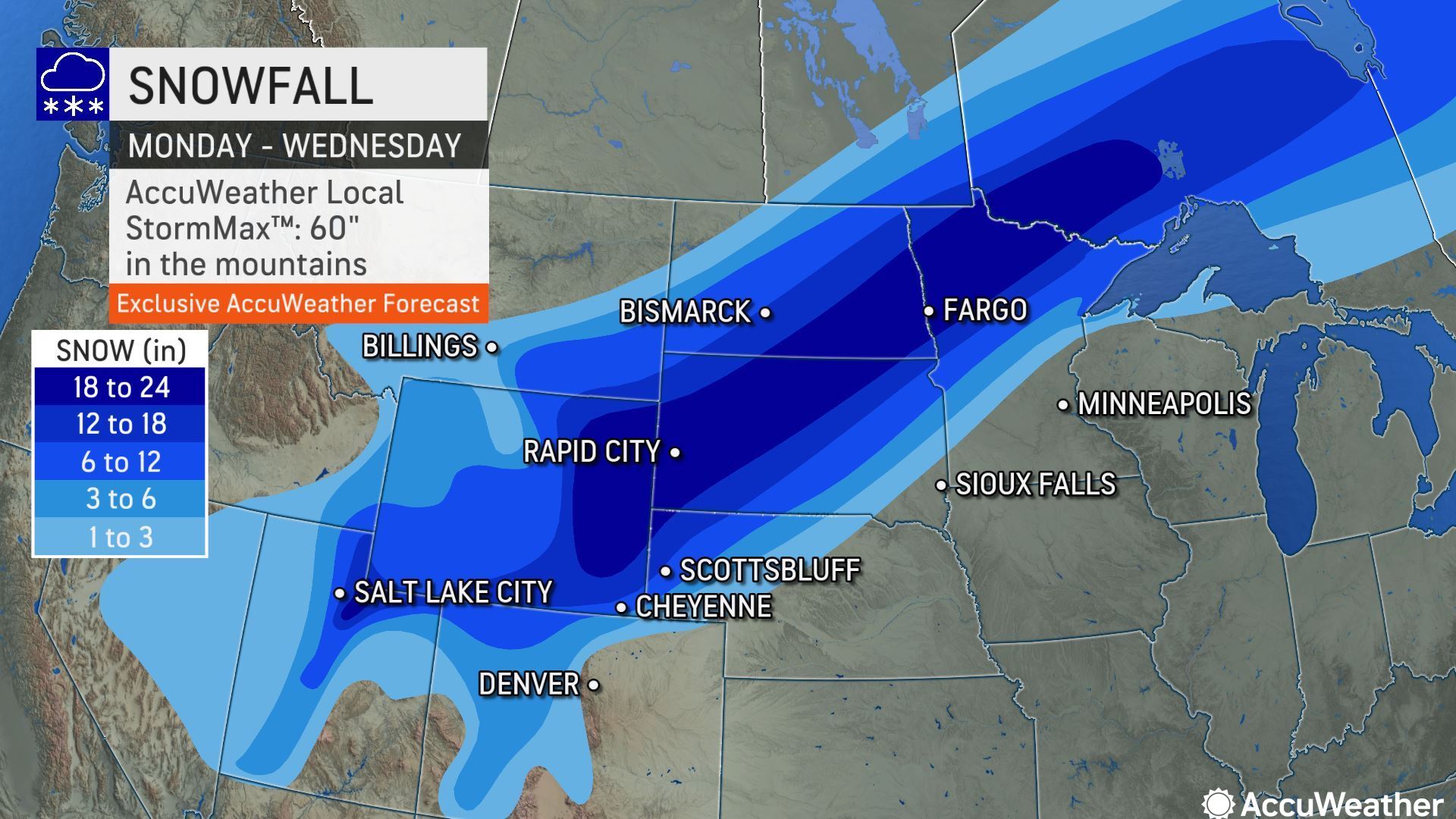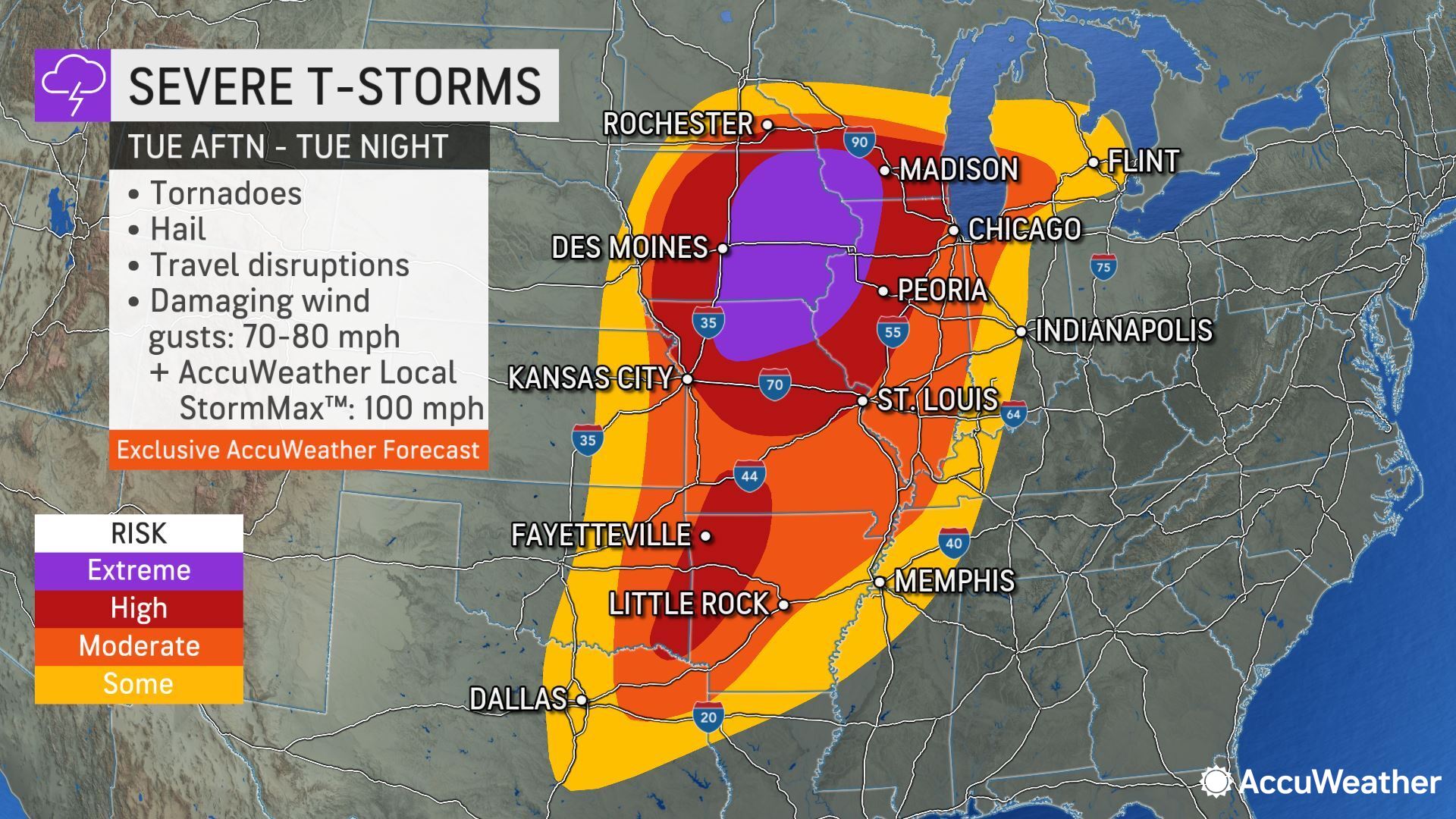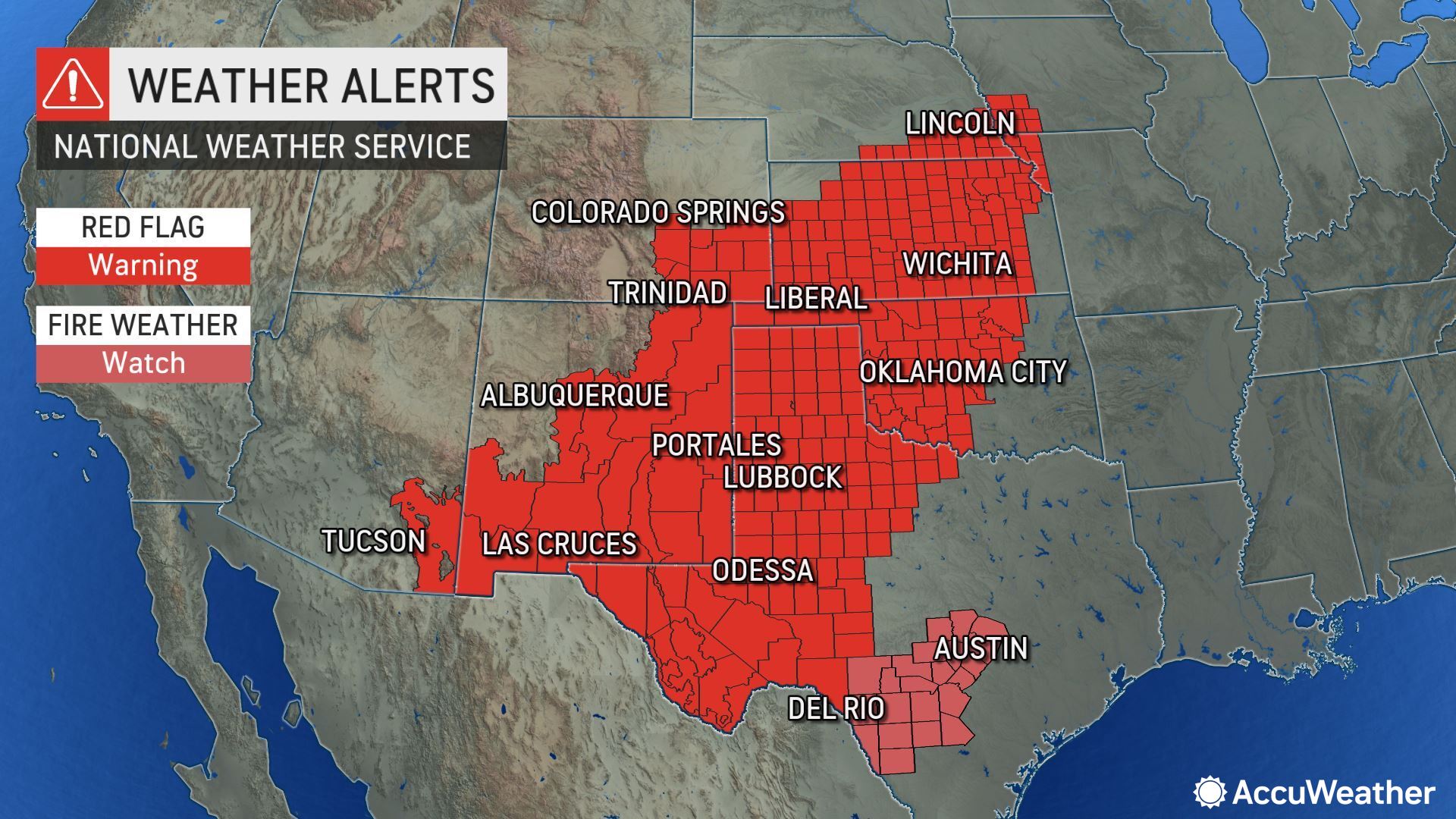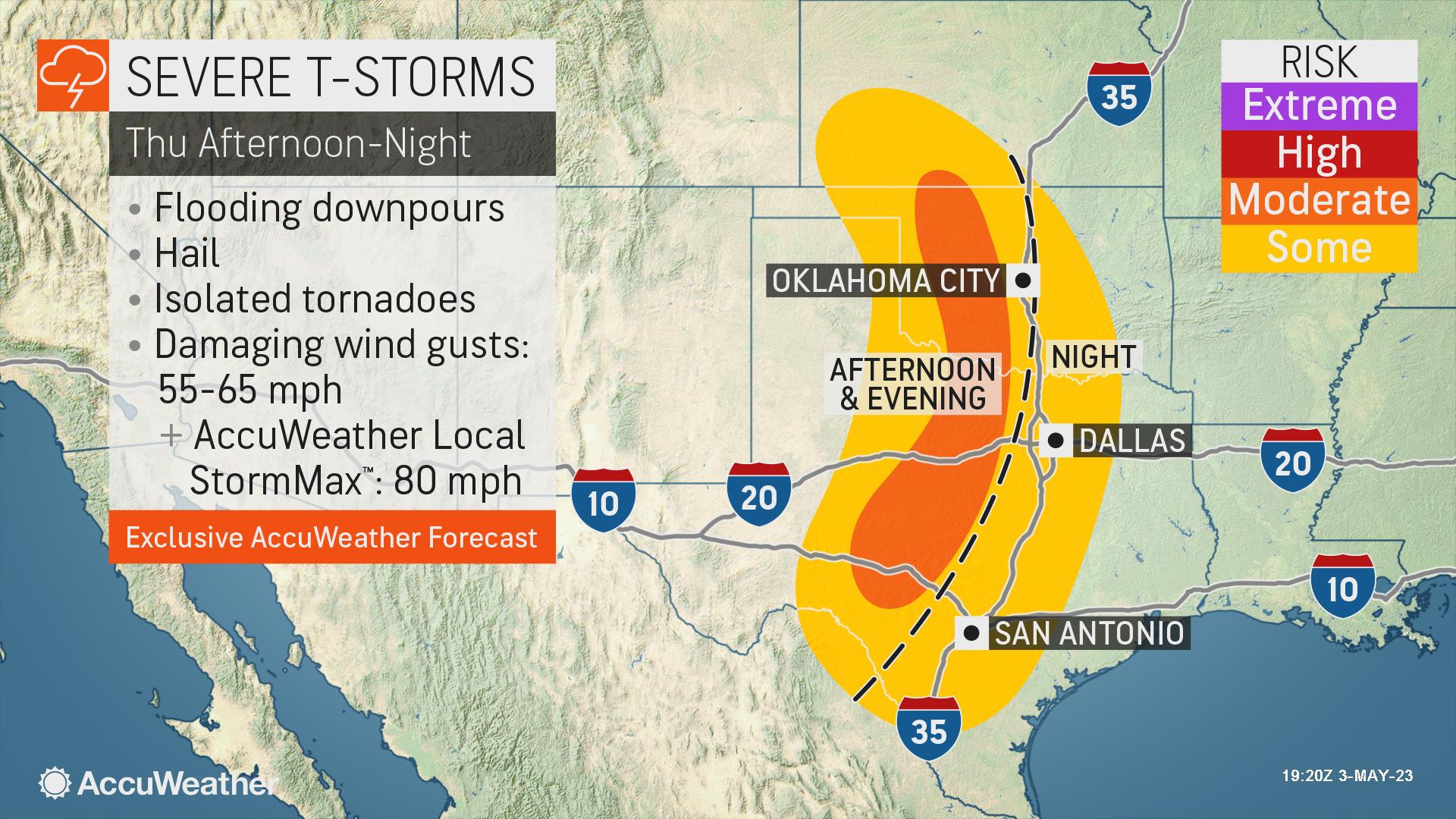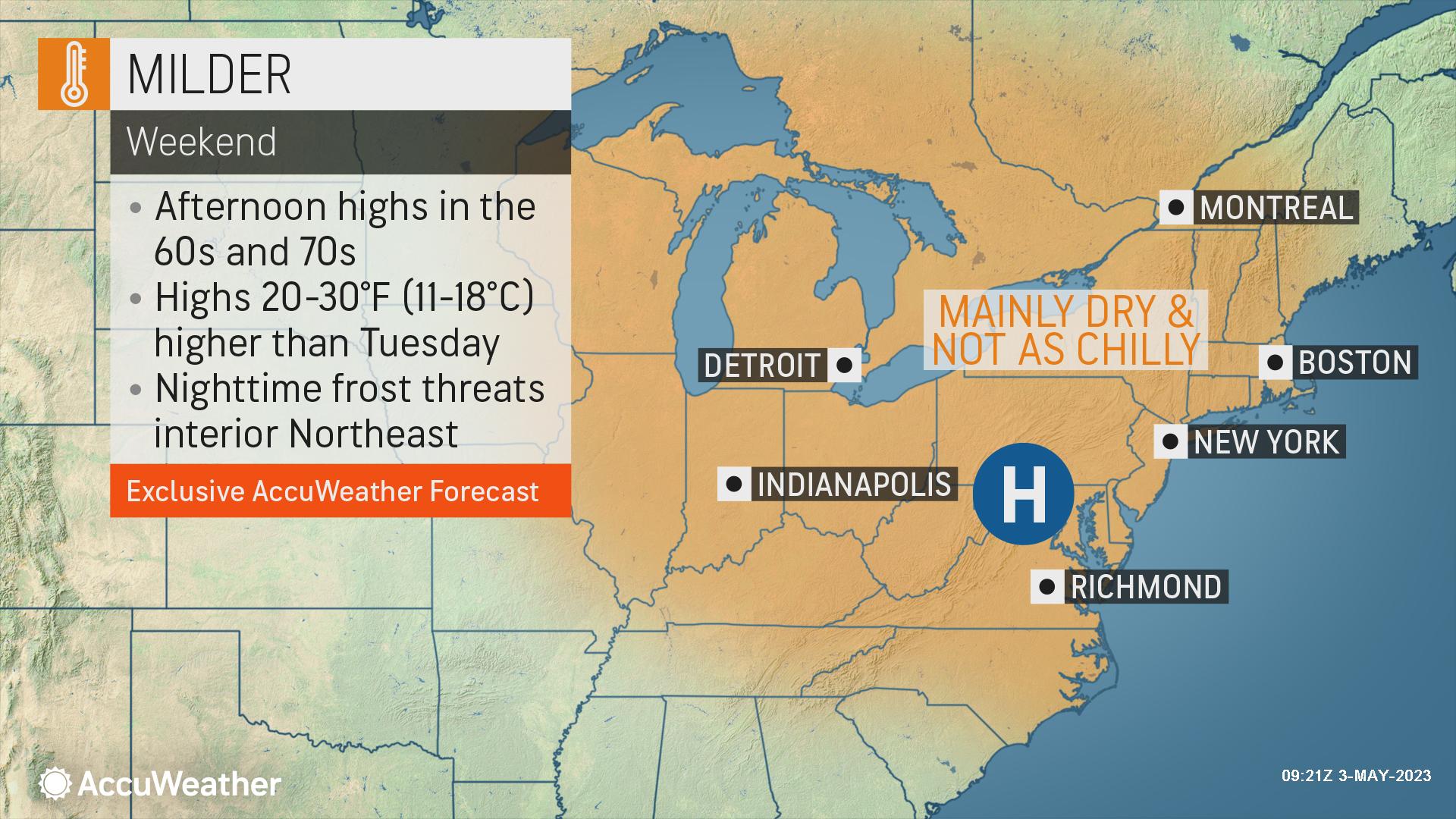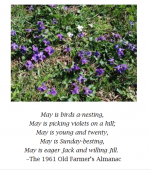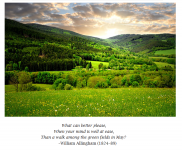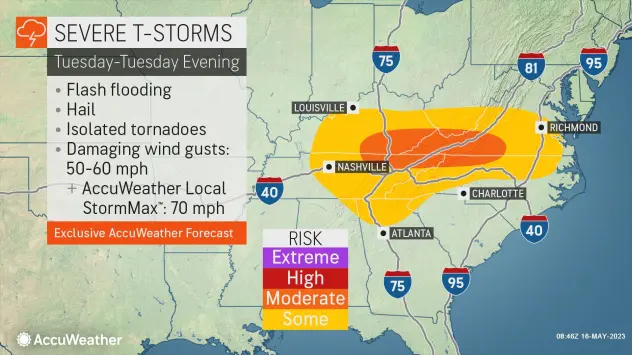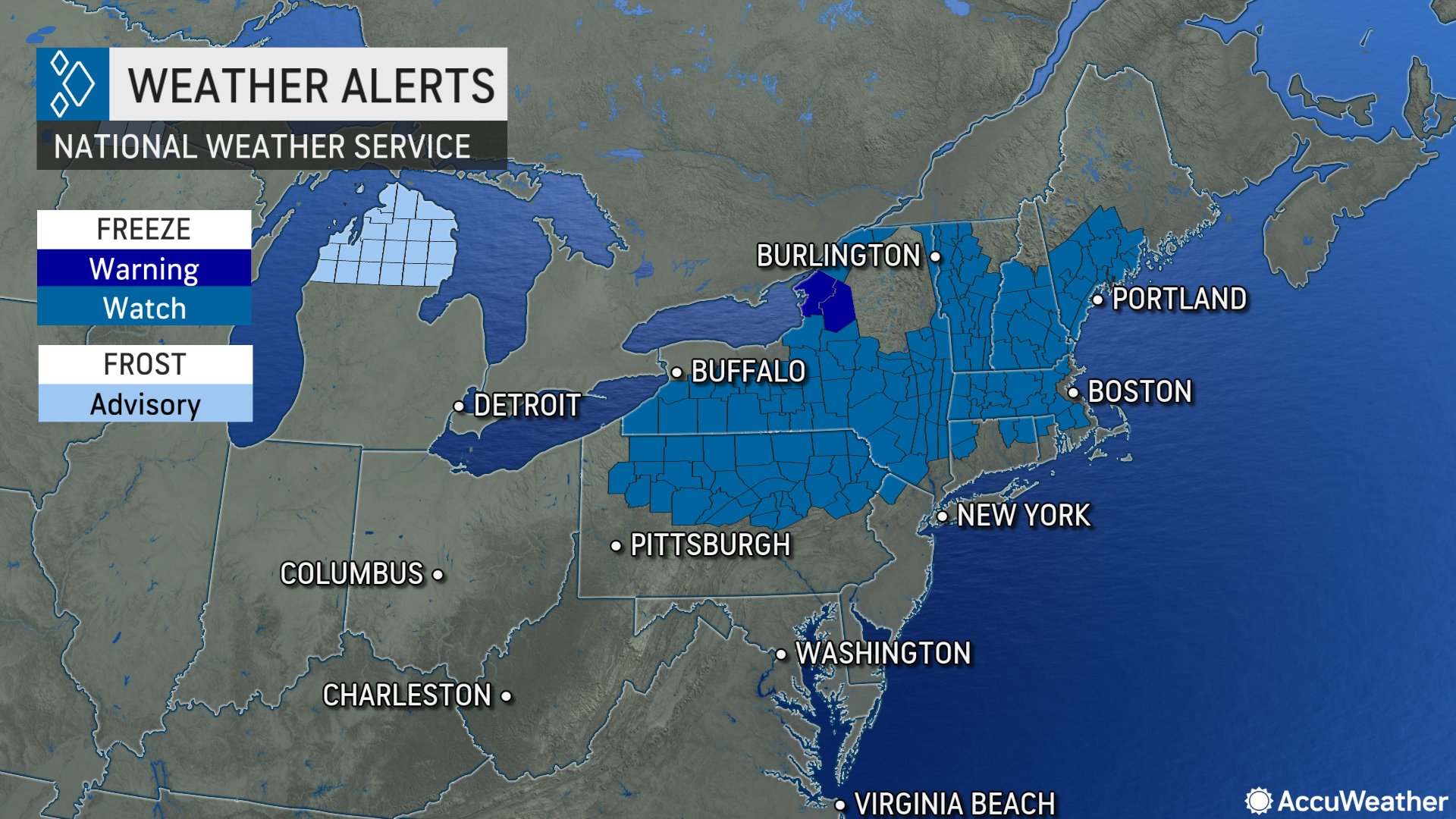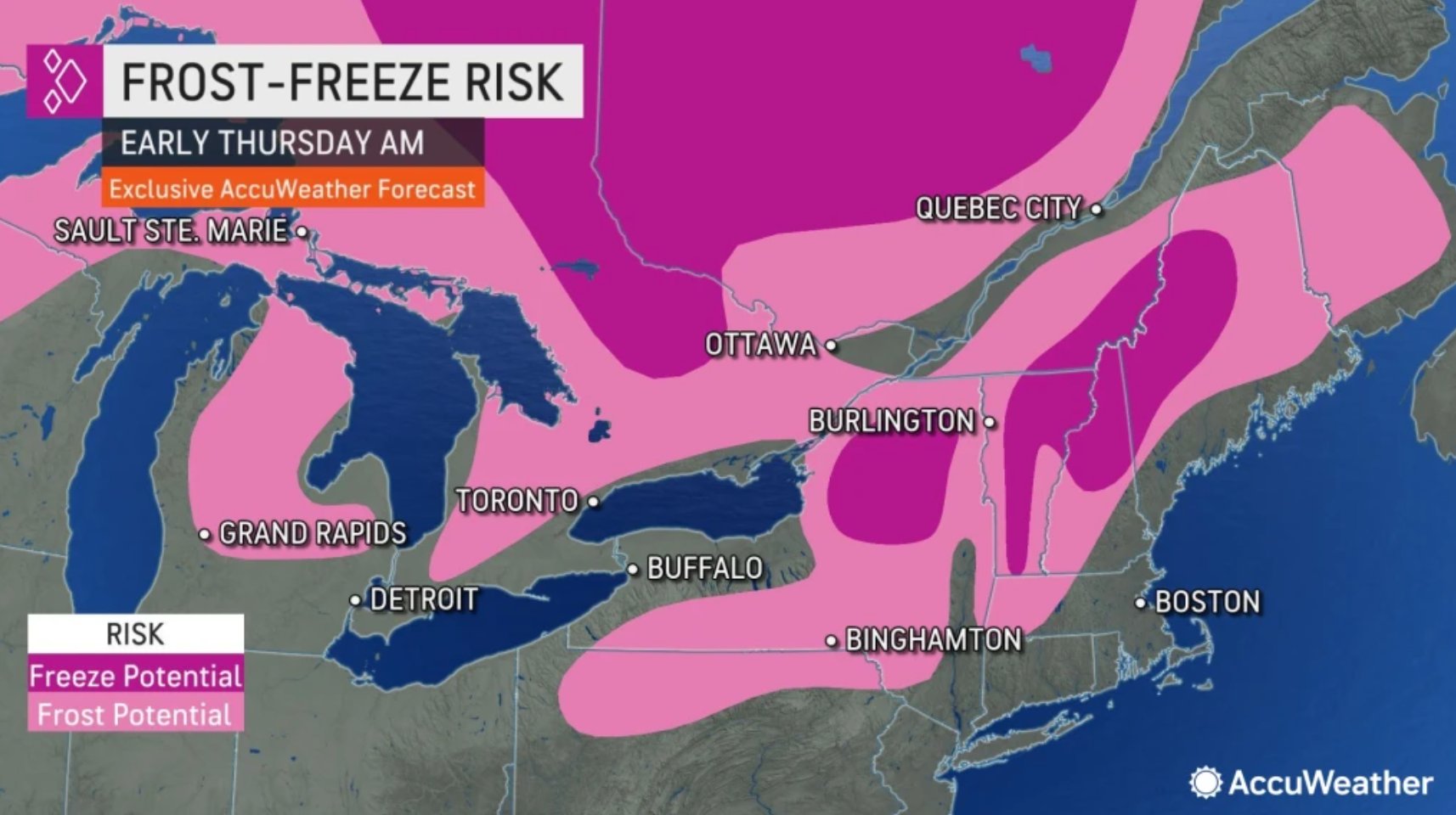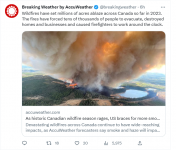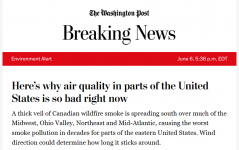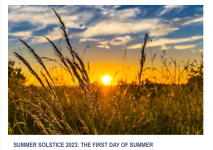You are using an out of date browser. It may not display this or other websites correctly.
You should upgrade or use an alternative browser.
You should upgrade or use an alternative browser.
Solar Grand Solar Minimum part deux
- Thread starter Dennis Olson
- Start date
-
- Tags
- grand solar minimum
northern watch
TB Fanatic
northern watch
TB Fanatic
jed turtle
a brother in the Lord
Well, We are a bit overdue on some information bout GSM:
Grand Canyon's North Rim will open later than usual this year. Here's when and why.
https://twitter.com/share?url=http://a.msn.com/03/en-us/AA19GO2g?ocid=st&text=Grand+Canyon's+North+Rim+will+open+later+than+usual+this+year.+Here's+when+and+why.&original_referer=http://a.msn.com/03/en-us/AA19GO2g?ocid=st
https://web.whatsapp.com/send?text=http://a.msn.com/03/en-us/AA19GO2g?ocid=sw
People looking forward to visiting the North Rim of Grand Canyon National Park will have to wait a little longer this year.
1/17 SLIDES © Arizona Office of Tourism
The Grand Canyon North Rim Lodge offer unparalleled views of the canyon.
The rim's seasonal closure usually begins in mid-October and ends in mid-May. However, this year, it is scheduled to open on June 2 due to a record amount of snow.
More than 20 feet of snow had fallen by early April. The delay is needed so that State Route 67 can be plowed and staff can reopen the lodge and other visitor facilities.
Start the day smarter. Get all the news you need in your inbox each morning.
“We appreciate the patience and cooperation of our neighbors and visitors with this delay as our partners and park staff work to open the North Rim roads, trails, and facilities safely,” Superintendent Ed Keable said in a statement.
 © NPS Photo/E. Shalla Grand Canyon Lodge at the North Rim of Grand Canyon National Park was covered with snow and icicles on April 4, 2023. The North Rim has so far received more than 250 inches of…
© NPS Photo/E. Shalla Grand Canyon Lodge at the North Rim of Grand Canyon National Park was covered with snow and icicles on April 4, 2023. The North Rim has so far received more than 250 inches of…
Here's what visitors should know.
America's least-visited national parks: Perfect places for nature lovers who hate crowds
Can't make it to a national park?: Your mind can still wander there with this app
April 12-June 2

Sent from my iPad
Grand Canyon's North Rim will open later than usual this year. Here's when and why.
Jill Cassidy, Arizona Republic 2 days agoGrand Canyon's North Rim will open later than usual this year. Here's when and why.
https://twitter.com/share?url=http://a.msn.com/03/en-us/AA19GO2g?ocid=st&text=Grand+Canyon's+North+Rim+will+open+later+than+usual+this+year.+Here's+when+and+why.&original_referer=http://a.msn.com/03/en-us/AA19GO2g?ocid=st
https://web.whatsapp.com/send?text=http://a.msn.com/03/en-us/AA19GO2g?ocid=sw
People looking forward to visiting the North Rim of Grand Canyon National Park will have to wait a little longer this year.
1/17 SLIDES © Arizona Office of Tourism
The Grand Canyon North Rim Lodge offer unparalleled views of the canyon.
The rim's seasonal closure usually begins in mid-October and ends in mid-May. However, this year, it is scheduled to open on June 2 due to a record amount of snow.
More than 20 feet of snow had fallen by early April. The delay is needed so that State Route 67 can be plowed and staff can reopen the lodge and other visitor facilities.
Start the day smarter. Get all the news you need in your inbox each morning.
“We appreciate the patience and cooperation of our neighbors and visitors with this delay as our partners and park staff work to open the North Rim roads, trails, and facilities safely,” Superintendent Ed Keable said in a statement.

Here's what visitors should know.
America's least-visited national parks: Perfect places for nature lovers who hate crowds
Can't make it to a national park?: Your mind can still wander there with this app
When will Grand Canyon North Rim lodge, roads and trails open in 2023?
The park announced the following schedule on April 7.April 12-June 2
- North Kaibab Trail is closed from Cottonwood Campground to the North Kaibab Trailhead. The North Kaibab Trail and North Rim pipeline were damaged by rockfall and landslides, making many areas unsafe and impassable. This closure will allow repairs to take place. Hikers will not be permitted through this area for any reason.
- The Visitor Contact Station will reopen and daily ranger-led programs will resume.
- The Grand Canyon Conservancy Bookstore will reopen.
- The Backcountry Information Center will reopen.
- Grand Canyon Lodge North Rim, including lodging, groceries, retail, dining, shower, laundry and the gas station are anticipated to open. The lodge dining room will be open for breakfast, lunch and dinner with reservations required for dinner.
- Mule rides will resume. Contact Grand Canyon Trail Ride at 435-679-8665 or canyonrides.com for details.
- The North Rim Campground will reopen. Make reservations by calling 877-444-6777 or at recreation.gov. Reservations for Demotte Campground, 7 miles north of the park entrance in Kaibab National Forest, can be made at recreation.gov.
- The Cape Royal and Point Imperial roads will reopen. Snow removal and road repairs will keep those roads closed until this date.
- Access to the Widforss Trail, Point Sublime, the North Bass Trailhead and other destinations on the Kaibab Plateau within the park will reopen after downed trees blocking the routes are removed.

Grand Canyon's North Rim will open later than usual this year. Here's when and why.
The seasonal closure of the Grand Canyon's North Rim is longer this year. Here's why and a look at when the trails, roads and lodge will re-open.
www.usatoday.com
Sent from my iPad
jed turtle
a brother in the Lord
Well, We are a bit overdue on some information bout GSM:
Grand Canyon's North Rim will open later than usual this year. Here's when and why.
Jill Cassidy, Arizona Republic 2 days ago
Grand Canyon's North Rim will open later than usual this year. Here's when and why.
https://twitter.com/share?url=http://a.msn.com/03/en-us/AA19GO2g?ocid=st&text=Grand+Canyon's+North+Rim+will+open+later+than+usual+this+year.+Here's+when+and+why.&original_referer=http://a.msn.com/03/en-us/AA19GO2g?ocid=st
https://web.whatsapp.com/send?text=http://a.msn.com/03/en-us/AA19GO2g?ocid=sw
People looking forward to visiting the North Rim of Grand Canyon National Park will have to wait a little longer this year.
Slide 1 of 17: The Grand Canyon North Rim Lodge offer unparalleled views of the canyon.
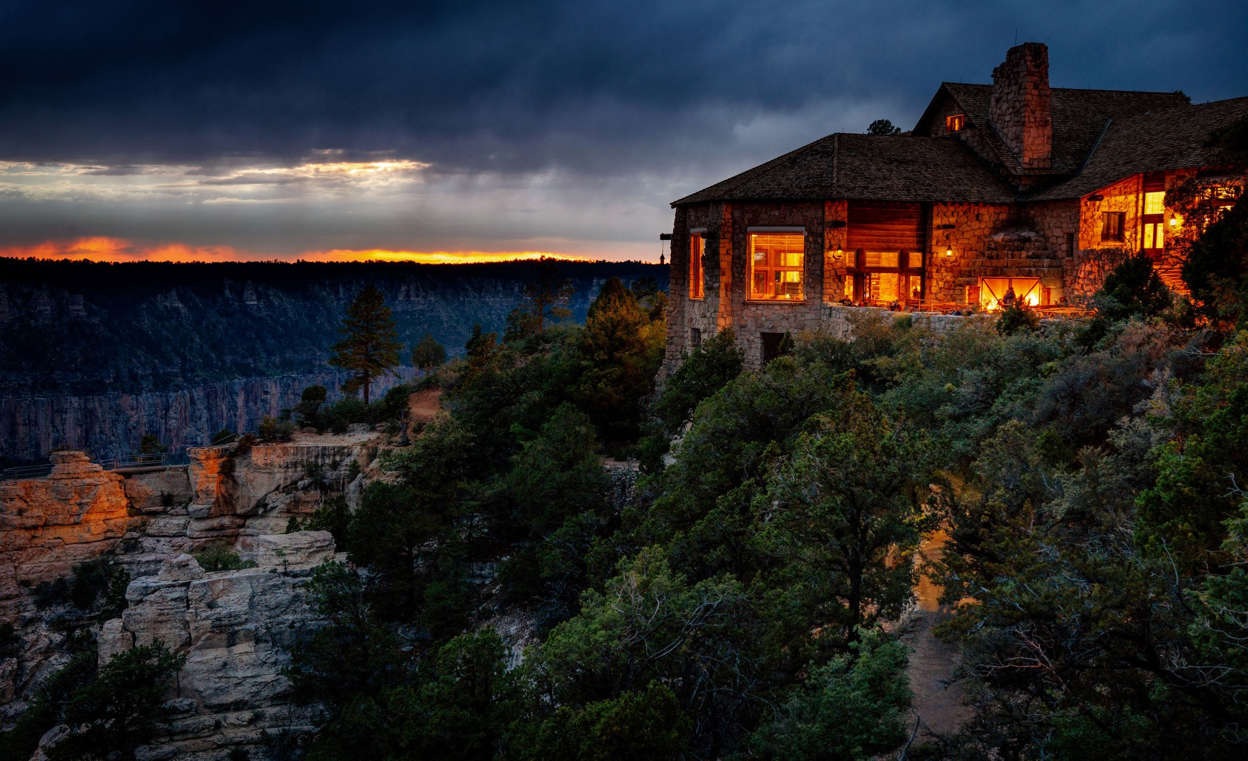
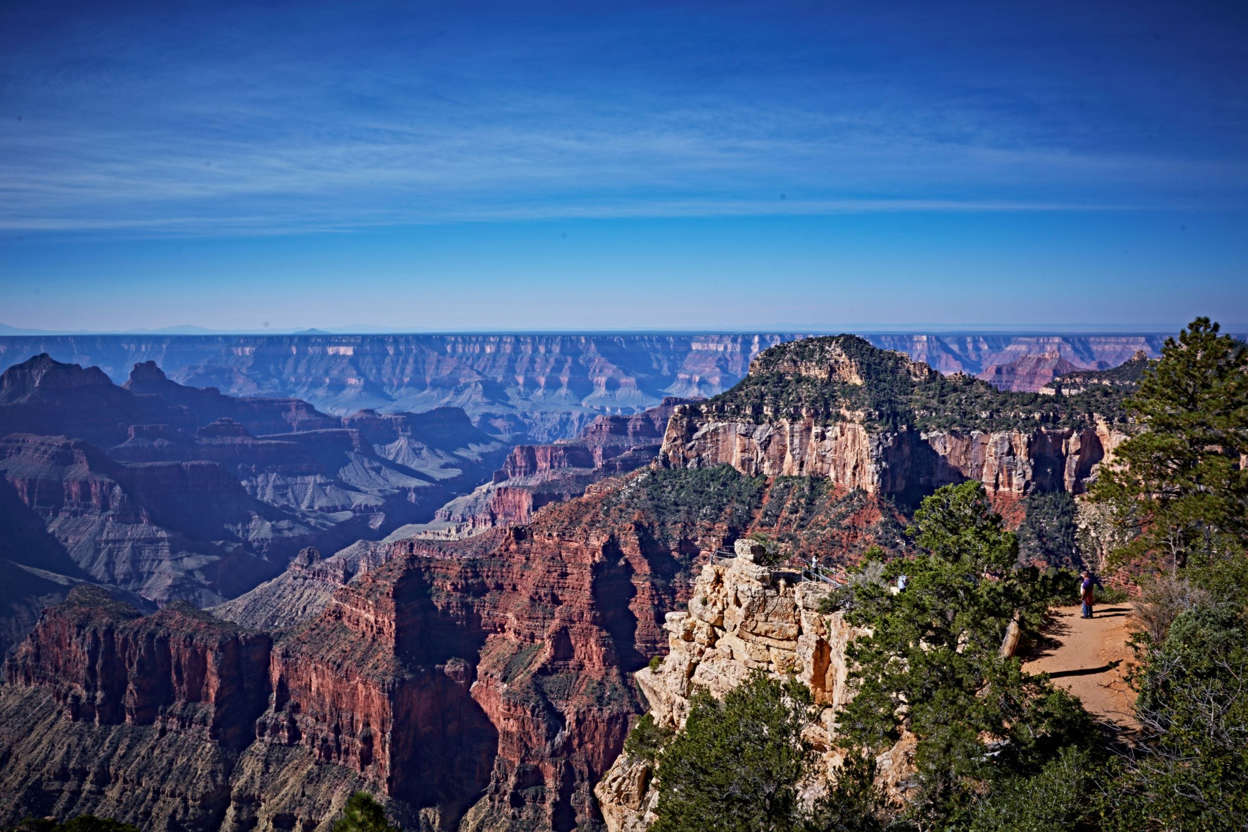
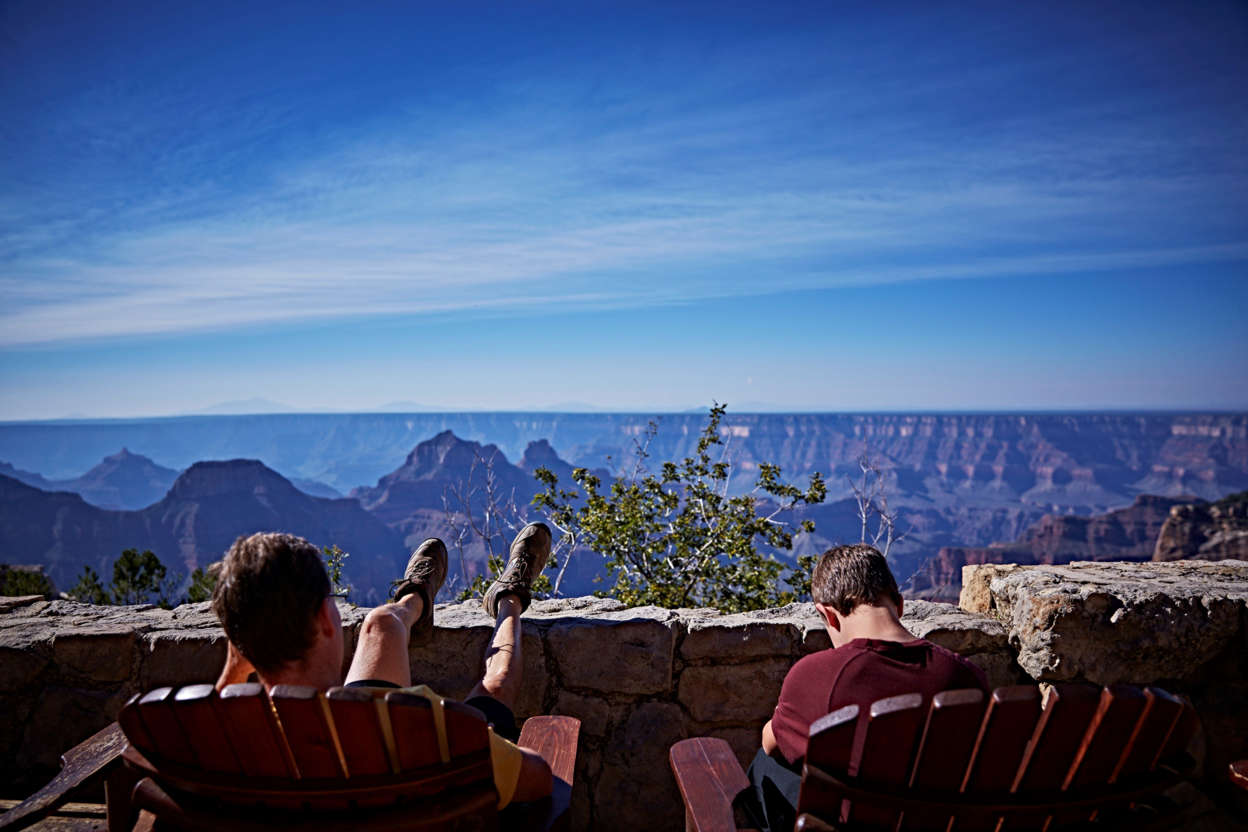


1/17 SLIDES © Arizona Office of Tourism
The Grand Canyon North Rim Lodge offer unparalleled views of the canyon.
The rim's seasonal closure usually begins in mid-October and ends in mid-May. However, this year, it is scheduled to open on June 2 due to a record amount of snow.
More than 20 feet of snow had fallen by early April. The delay is needed so that State Route 67 can be plowed and staff can reopen the lodge and other visitor facilities.
Start the day smarter. Get all the news you need in your inbox each morning.
“We appreciate the patience and cooperation of our neighbors and visitors with this delay as our partners and park staff work to open the North Rim roads, trails, and facilities safely,” Superintendent Ed Keable said in a statement.
© NPS Photo/E. Shalla Grand Canyon Lodge at the North Rim of Grand Canyon National Park was covered with snow and icicles on April 4, 2023. The North Rim has so far received more than 250 inches of…
Here's what visitors should know.
America's least-visited national parks: Perfect places for nature lovers who hate crowds
Can't make it to a national park?: Your mind can still wander there with this app
When will Grand Canyon North Rim lodge, roads and trails open in 2023?
The park announced the following schedule on April 7.
April 12-June 2
June 2
- North Kaibab Trail is closed from Cottonwood Campground to the North Kaibab Trailhead. The North Kaibab Trail and North Rim pipeline were damaged by rockfall and landslides, making many areas unsafe and impassable. This closure will allow repairs to take place. Hikers will not be permitted through this area for any reason.
June 9
- The Visitor Contact Station will reopen and daily ranger-led programs will resume.
- The Grand Canyon Conservancy Bookstore will reopen.
- The Backcountry Information Center will reopen.
- Grand Canyon Lodge North Rim, including lodging, groceries, retail, dining, shower, laundry and the gas station are anticipated to open. The lodge dining room will be open for breakfast, lunch and dinner with reservations required for dinner.
- Mule rides will resume. Contact Grand Canyon Trail Ride at 435-679-8665 or canyonrides.com for details.
July 1
- The North Rim Campground will reopen. Make reservations by calling 877-444-6777 or at recreation.gov. Reservations for Demotte Campground, 7 miles north of the park entrance in Kaibab National Forest, can be made at recreation.gov.
- The Cape Royal and Point Imperial roads will reopen. Snow removal and road repairs will keep those roads closed until this date.
- Access to the Widforss Trail, Point Sublime, the North Bass Trailhead and other destinations on the Kaibab Plateau within the park will reopen after downed trees blocking the routes are removed.

Grand Canyon's North Rim will open later than usual this year. Here's when and why.
The seasonal closure of the Grand Canyon's North Rim is longer this year. Here's why and a look at when the trails, roads and lodge will re-open.www.usatoday.com
Sent from my iPad
jed turtle
a brother in the Lord
Sure has been quiet in here lately... wish all the heavy posters would return. Anyways I miss all the weather/ climate reports from around the world and really, really appreciate all the hard faithful word that has been done here over the years!
anyways, i saw this over on Lew Rockwell this morning:
Exposing the Climate Racket: The Latest IPCC Report - LewRockwell
The entire world appears enthralled with the Intergovernmental Panel on Climate Change (IPCC) and its periodic edicts. The pretension is that this is a “scientific” organization employing scientific methodology to forecast risks of global warming. It isn’t.
Reviewing the latest IPCC Report, one is struck by how far-ranging this global Panel now ventures—into “social sciences,” economics, politics, and (of course) social justice. Notable is the wide range of supposed disciplines brought to bear on the single issue of greenhouse gasses, while other contributing causes of environmental harm—especially chemical pollution—are comprehensively sidestepped.
Most open minds are receptive to the possibility that human activity could warm the globe: the question is how much, and what harm (if any) that will cause. This is where science could be very useful. Scientific inquiry should then focus on two very complex issues:
1) causation (establishing that CO2 and other gasses cause climate change), and
2) prediction (how much such change, if established, will impact the environment over time). Those who cannot accurately predict the weather for next week, now feign prophetic clarity for 2100 A.D.
There does not appear to be an Intergovernmental Panel on Chemical Pollution. Why is that? Species are disappearing due to chemical contaminants. Human sperm counts are plummeting, cancers rising, and endocrine disruptors may be impacting gender biologically. Rachel Carson exposed these problems in 1962, in her ground-breaking book Silent Spring. Six decades later, the entire world is mesmerized by the IPCC like some newfound Papal order. As for the chemicals …crickets.
The IPCC has strayed so far from science that it is properly defined as a political and not a scientific entity. The latest IPCC Report reveals this single-lens bias in favor of the climate-change cult through the prism of expanding disciplines while narrowing focus: more and more bunk studies are being used to label all things horrible as caused by greenhouse gasses.
Seas are being emptied of fish, species are dying, and the culprit is ever carbon.
Do scientists not consider the consequences of chemical pollution any more, or predict where the world will be if no brakes are applied to the generation of yet more man-made pollutants?
The question becomes downright eerie when the IPCC instead advocates for more chemical applications to the ecosystem as a solution to greenhouse gas warming: a climate-sensitive diet is now to be “balanced” by plants, to save the world from cows.
Globalists have found that they can weaponize poor people to help them get richer, cry globalist crocodile tears for crocodiles, weep for bees, and rescue humanity from cows—by culling them. Greenhouse gasses are not the sole threat to food and fauna. Everything about the latest IPCC document reeks of fraud.
Where is the concern for BPA, phthalates, PFOAs, or neonicotinoids in the IPCC pronouncements?
How can “science” ignore these profound threats to the ecosystem and humans while using carbon dioxide to hone in on wealth disparity, social justice, and human fears of climate change?
More, the proposed solutions of a plant-based diet depend on the industrial chemical polluters who happily count themselves members of the World Economic Forum and peddle their chemical wares as salvific of all climate-change ills.
The IPCC scientific “standards”
Scientifically speaking, the IPCC Report does not obscure that it is speculative in its predictions:
“Building on multiple analytical frameworks, including those from the physical and social sciences, this report identifies opportunities for transformative action which are effective, feasible, just and equitable using concepts of systems transitions and resilient development pathways. ….Based on scientific understanding, key findings can be formulated as statements of fact or associated with an assessed level of confidence using the IPCC calibrated language.”
The “calibrated language” describes the “level of confidence” the various scientific possibilities are ascribed:
“The likely range of total human-caused global surface temperature increase from 1850–1900 to 2010–20199 is 0.8°C to 1.3°C, with a best estimate of 1.07°C. It is likely that well-mixed GHGs contributed a warming of 1.0°C–2.0°C…. It is very likely that GHG emissions were the main driver of tropospheric warming and extremely likely that human-caused stratospheric ozone depletion was the main driver of stratospheric cooling between 1979 and the mid-1990s. It is virtually certain that the global upper ocean (0-700m) has warmed since the 1970s and extremely likely that human influence is the main driver.” [emphasis of variabilities added].
The Report by its terms speaks in likelihoods and “best estimates,” but climate alarmists then harden these cautious scientific boundaries into calibrated end-of-the-world alarms of purported certitude. This is hardly scientific. It is extremely likely that globalists and their large corporate allies are lying to garner power, wealth, and control.
What about chemical pollution?
Encompassing all aspects of the world under the sun (except chemical pollution), the Report posits “medium confidence” about agricultural impacts:
“Although overall agricultural productivity has increased, climate change has slowed this growth in agricultural productivity over the past 50 years globally (medium confidence), with related negative crop yield impacts mainly recorded in mid- and low latitude regions, and some positive impacts in some high latitude regions (high confidence). Ocean warming in the 20th century and beyond has contributed to an overall decrease in maximum catch potential (medium confidence).”
Is it possible that agricultural productivity has stalled due to soils saturated with chemicals required in GMO-cropping, or massive erosion from the techno-industrial methods of modern agriculture? The Report apparently does not consider that. Do unscrupulous factory ships, chemical saturations, and plastic refuse in the oceans have something to do with decreases in fish catches? We can say with medium confidence that they do, but only the vilified “greenhouse” offenders are highlighted in the Report.
How does the IPCC differentiate
between mental health harms caused by climate change, and those caused by climate change alarmism? This passage smacks of bootstrapping:
“Climate change has adversely affected human physical health globally and mental health in assessed regions (very high confidence), and is contributing to humanitarian crises where climate hazards interact with high vulnerability (high confidence).”
This circular reasoning guarantees that when alarmists employ Orwellian exaggerations to terrify humanity about the future, the IPCC can point to human terror as “caused” by climate change—rather than by anthropogenic climate alarmism (high confidence: see Greta Thunberg et al).
It is difficult to discern whether sea levels are rising as quickly as the globalist seachange. And of course it is the poorest of the world’s populations who are suffering the most from renewable energy technologies, and climate change policies that escalate fuel prices. Is that the plan, or just an unintended consequence, like killing all the cows to force-feed humanity with chemical-saturated plants?
The Report cautions that “Limiting human-caused global warming requires net zero anthropogenic CO2 emissions.” As UN, WEF, and WHO globalists leverage climate alarmism into a New Age AI art, what is required is net zero intergovernmental fear mongering.
Let us not hold our collective breaths for the study of that existential emergency (extremely low confidence).
The original source of this article is Global Research.
Exposing the Climate Racket: The Latest IPCC Report - LewRockwell
Sent from my iPad
anyways, i saw this over on Lew Rockwell this morning:
Exposing the Climate Racket: The Latest IPCC Report - LewRockwell
The entire world appears enthralled with the Intergovernmental Panel on Climate Change (IPCC) and its periodic edicts. The pretension is that this is a “scientific” organization employing scientific methodology to forecast risks of global warming. It isn’t.
Reviewing the latest IPCC Report, one is struck by how far-ranging this global Panel now ventures—into “social sciences,” economics, politics, and (of course) social justice. Notable is the wide range of supposed disciplines brought to bear on the single issue of greenhouse gasses, while other contributing causes of environmental harm—especially chemical pollution—are comprehensively sidestepped.
Most open minds are receptive to the possibility that human activity could warm the globe: the question is how much, and what harm (if any) that will cause. This is where science could be very useful. Scientific inquiry should then focus on two very complex issues:
1) causation (establishing that CO2 and other gasses cause climate change), and
2) prediction (how much such change, if established, will impact the environment over time). Those who cannot accurately predict the weather for next week, now feign prophetic clarity for 2100 A.D.
There does not appear to be an Intergovernmental Panel on Chemical Pollution. Why is that? Species are disappearing due to chemical contaminants. Human sperm counts are plummeting, cancers rising, and endocrine disruptors may be impacting gender biologically. Rachel Carson exposed these problems in 1962, in her ground-breaking book Silent Spring. Six decades later, the entire world is mesmerized by the IPCC like some newfound Papal order. As for the chemicals …crickets.
The IPCC has strayed so far from science that it is properly defined as a political and not a scientific entity. The latest IPCC Report reveals this single-lens bias in favor of the climate-change cult through the prism of expanding disciplines while narrowing focus: more and more bunk studies are being used to label all things horrible as caused by greenhouse gasses.
Seas are being emptied of fish, species are dying, and the culprit is ever carbon.
Do scientists not consider the consequences of chemical pollution any more, or predict where the world will be if no brakes are applied to the generation of yet more man-made pollutants?
The question becomes downright eerie when the IPCC instead advocates for more chemical applications to the ecosystem as a solution to greenhouse gas warming: a climate-sensitive diet is now to be “balanced” by plants, to save the world from cows.
Globalists have found that they can weaponize poor people to help them get richer, cry globalist crocodile tears for crocodiles, weep for bees, and rescue humanity from cows—by culling them. Greenhouse gasses are not the sole threat to food and fauna. Everything about the latest IPCC document reeks of fraud.
Where is the concern for BPA, phthalates, PFOAs, or neonicotinoids in the IPCC pronouncements?
How can “science” ignore these profound threats to the ecosystem and humans while using carbon dioxide to hone in on wealth disparity, social justice, and human fears of climate change?
More, the proposed solutions of a plant-based diet depend on the industrial chemical polluters who happily count themselves members of the World Economic Forum and peddle their chemical wares as salvific of all climate-change ills.
The IPCC scientific “standards”
Scientifically speaking, the IPCC Report does not obscure that it is speculative in its predictions:
“Building on multiple analytical frameworks, including those from the physical and social sciences, this report identifies opportunities for transformative action which are effective, feasible, just and equitable using concepts of systems transitions and resilient development pathways. ….Based on scientific understanding, key findings can be formulated as statements of fact or associated with an assessed level of confidence using the IPCC calibrated language.”
The “calibrated language” describes the “level of confidence” the various scientific possibilities are ascribed:
“The likely range of total human-caused global surface temperature increase from 1850–1900 to 2010–20199 is 0.8°C to 1.3°C, with a best estimate of 1.07°C. It is likely that well-mixed GHGs contributed a warming of 1.0°C–2.0°C…. It is very likely that GHG emissions were the main driver of tropospheric warming and extremely likely that human-caused stratospheric ozone depletion was the main driver of stratospheric cooling between 1979 and the mid-1990s. It is virtually certain that the global upper ocean (0-700m) has warmed since the 1970s and extremely likely that human influence is the main driver.” [emphasis of variabilities added].
The Report by its terms speaks in likelihoods and “best estimates,” but climate alarmists then harden these cautious scientific boundaries into calibrated end-of-the-world alarms of purported certitude. This is hardly scientific. It is extremely likely that globalists and their large corporate allies are lying to garner power, wealth, and control.
What about chemical pollution?
Encompassing all aspects of the world under the sun (except chemical pollution), the Report posits “medium confidence” about agricultural impacts:
“Although overall agricultural productivity has increased, climate change has slowed this growth in agricultural productivity over the past 50 years globally (medium confidence), with related negative crop yield impacts mainly recorded in mid- and low latitude regions, and some positive impacts in some high latitude regions (high confidence). Ocean warming in the 20th century and beyond has contributed to an overall decrease in maximum catch potential (medium confidence).”
Is it possible that agricultural productivity has stalled due to soils saturated with chemicals required in GMO-cropping, or massive erosion from the techno-industrial methods of modern agriculture? The Report apparently does not consider that. Do unscrupulous factory ships, chemical saturations, and plastic refuse in the oceans have something to do with decreases in fish catches? We can say with medium confidence that they do, but only the vilified “greenhouse” offenders are highlighted in the Report.
How does the IPCC differentiate
between mental health harms caused by climate change, and those caused by climate change alarmism? This passage smacks of bootstrapping:
“Climate change has adversely affected human physical health globally and mental health in assessed regions (very high confidence), and is contributing to humanitarian crises where climate hazards interact with high vulnerability (high confidence).”
This circular reasoning guarantees that when alarmists employ Orwellian exaggerations to terrify humanity about the future, the IPCC can point to human terror as “caused” by climate change—rather than by anthropogenic climate alarmism (high confidence: see Greta Thunberg et al).
It is difficult to discern whether sea levels are rising as quickly as the globalist seachange. And of course it is the poorest of the world’s populations who are suffering the most from renewable energy technologies, and climate change policies that escalate fuel prices. Is that the plan, or just an unintended consequence, like killing all the cows to force-feed humanity with chemical-saturated plants?
The Report cautions that “Limiting human-caused global warming requires net zero anthropogenic CO2 emissions.” As UN, WEF, and WHO globalists leverage climate alarmism into a New Age AI art, what is required is net zero intergovernmental fear mongering.
Let us not hold our collective breaths for the study of that existential emergency (extremely low confidence).
The original source of this article is Global Research.
Exposing the Climate Racket: The Latest IPCC Report - LewRockwell
Sent from my iPad
jed turtle
a brother in the Lord
Additionally, no account that I have ever seen quantifies -or even acknowledges - the heat contributions made by thousands of undersea volcanoes and possiboy millions of thermal vents beneath the oceans! Not to mention the gargantuan volumes of “greenhouse gases” from terrestrial volcanic activity!Sure has been quiet in here lately... wish all the heavy posters would return. Anyways I miss all the weather/ climate reports from around the world and really, really appreciate all the hard faithful word that has been done here over the years!
anyways, i saw this over on Lew Rockwell this morning:
Exposing the Climate Racket: The Latest IPCC Report - LewRockwell
The entire world appears enthralled with the Intergovernmental Panel on Climate Change (IPCC) and its periodic edicts. The pretension is that this is a “scientific” organization employing scientific methodology to forecast risks of global warming. It isn’t.
Reviewing the latest IPCC Report, one is struck by how far-ranging this global Panel now ventures—into “social sciences,” economics, politics, and (of course) social justice. Notable is the wide range of supposed disciplines brought to bear on the single issue of greenhouse gasses, while other contributing causes of environmental harm—especially chemical pollution—are comprehensively sidestepped.
Most open minds are receptive to the possibility that human activity could warm the globe: the question is how much, and what harm (if any) that will cause. This is where science could be very useful. Scientific inquiry should then focus on two very complex issues:
1) causation (establishing that CO2 and other gasses cause climate change), and
2) prediction (how much such change, if established, will impact the environment over time). Those who cannot accurately predict the weather for next week, now feign prophetic clarity for 2100 A.D.
There does not appear to be an Intergovernmental Panel on Chemical Pollution. Why is that? Species are disappearing due to chemical contaminants. Human sperm counts are plummeting, cancers rising, and endocrine disruptors may be impacting gender biologically. Rachel Carson exposed these problems in 1962, in her ground-breaking book Silent Spring. Six decades later, the entire world is mesmerized by the IPCC like some newfound Papal order. As for the chemicals …crickets.
The IPCC has strayed so far from science that it is properly defined as a political and not a scientific entity. The latest IPCC Report reveals this single-lens bias in favor of the climate-change cult through the prism of expanding disciplines while narrowing focus: more and more bunk studies are being used to label all things horrible as caused by greenhouse gasses.
Seas are being emptied of fish, species are dying, and the culprit is ever carbon.
Do scientists not consider the consequences of chemical pollution any more, or predict where the world will be if no brakes are applied to the generation of yet more man-made pollutants?
The question becomes downright eerie when the IPCC instead advocates for more chemical applications to the ecosystem as a solution to greenhouse gas warming: a climate-sensitive diet is now to be “balanced” by plants, to save the world from cows.
Globalists have found that they can weaponize poor people to help them get richer, cry globalist crocodile tears for crocodiles, weep for bees, and rescue humanity from cows—by culling them. Greenhouse gasses are not the sole threat to food and fauna. Everything about the latest IPCC document reeks of fraud.
Where is the concern for BPA, phthalates, PFOAs, or neonicotinoids in the IPCC pronouncements?
How can “science” ignore these profound threats to the ecosystem and humans while using carbon dioxide to hone in on wealth disparity, social justice, and human fears of climate change?
More, the proposed solutions of a plant-based diet depend on the industrial chemical polluters who happily count themselves members of the World Economic Forum and peddle their chemical wares as salvific of all climate-change ills.
The IPCC scientific “standards”
Scientifically speaking, the IPCC Report does not obscure that it is speculative in its predictions:
“Building on multiple analytical frameworks, including those from the physical and social sciences, this report identifies opportunities for transformative action which are effective, feasible, just and equitable using concepts of systems transitions and resilient development pathways. ….Based on scientific understanding, key findings can be formulated as statements of fact or associated with an assessed level of confidence using the IPCC calibrated language.”
The “calibrated language” describes the “level of confidence” the various scientific possibilities are ascribed:
“The likely range of total human-caused global surface temperature increase from 1850–1900 to 2010–20199 is 0.8°C to 1.3°C, with a best estimate of 1.07°C. It is likely that well-mixed GHGs contributed a warming of 1.0°C–2.0°C…. It is very likely that GHG emissions were the main driver of tropospheric warming and extremely likely that human-caused stratospheric ozone depletion was the main driver of stratospheric cooling between 1979 and the mid-1990s. It is virtually certain that the global upper ocean (0-700m) has warmed since the 1970s and extremely likely that human influence is the main driver.” [emphasis of variabilities added].
The Report by its terms speaks in likelihoods and “best estimates,” but climate alarmists then harden these cautious scientific boundaries into calibrated end-of-the-world alarms of purported certitude. This is hardly scientific. It is extremely likely that globalists and their large corporate allies are lying to garner power, wealth, and control.
What about chemical pollution?
Encompassing all aspects of the world under the sun (except chemical pollution), the Report posits “medium confidence” about agricultural impacts:
“Although overall agricultural productivity has increased, climate change has slowed this growth in agricultural productivity over the past 50 years globally (medium confidence), with related negative crop yield impacts mainly recorded in mid- and low latitude regions, and some positive impacts in some high latitude regions (high confidence). Ocean warming in the 20th century and beyond has contributed to an overall decrease in maximum catch potential (medium confidence).”
Is it possible that agricultural productivity has stalled due to soils saturated with chemicals required in GMO-cropping, or massive erosion from the techno-industrial methods of modern agriculture? The Report apparently does not consider that. Do unscrupulous factory ships, chemical saturations, and plastic refuse in the oceans have something to do with decreases in fish catches? We can say with medium confidence that they do, but only the vilified “greenhouse” offenders are highlighted in the Report.
How does the IPCC differentiate
between mental health harms caused by climate change, and those caused by climate change alarmism? This passage smacks of bootstrapping:
“Climate change has adversely affected human physical health globally and mental health in assessed regions (very high confidence), and is contributing to humanitarian crises where climate hazards interact with high vulnerability (high confidence).”
This circular reasoning guarantees that when alarmists employ Orwellian exaggerations to terrify humanity about the future, the IPCC can point to human terror as “caused” by climate change—rather than by anthropogenic climate alarmism (high confidence: see Greta Thunberg et al).
It is difficult to discern whether sea levels are rising as quickly as the globalist seachange. And of course it is the poorest of the world’s populations who are suffering the most from renewable energy technologies, and climate change policies that escalate fuel prices. Is that the plan, or just an unintended consequence, like killing all the cows to force-feed humanity with chemical-saturated plants?
The Report cautions that “Limiting human-caused global warming requires net zero anthropogenic CO2 emissions.” As UN, WEF, and WHO globalists leverage climate alarmism into a New Age AI art, what is required is net zero intergovernmental fear mongering.
Let us not hold our collective breaths for the study of that existential emergency (extremely low confidence).
The original source of this article is Global Research.
Exposing the Climate Racket: The Latest IPCC Report - LewRockwell
Sent from my iPad
TheSearcher
Are you sure about that?
I saw this morning that a CME is headed thus way. Did it already hit?
alpha
Veteran Member
Sometime tomorrow according to Suspicious 0bservers
jed turtle
a brother in the Lord
So here in Maine it has been rainy and cold for several days now. Sunday was a cold rainy day, And I have had to start a fire every evening. Sunday everyone I talked to -including myself- could not get any enthusiasm going to do anything. I knew about the ejection from the sun, and so I assumed that that might be what was going on in our spirits. We are electrical beings. A vast plasma ejection from the sun is going to affect EVERYTHING here in Earth, particularly now that the Earth’s magnetosphere is in an exaggerated rate of decline in strength.Sometime tomorrow according to Suspicious 0bservers
I think that a lot of what we deal with in our lives can be attributed to such external events that are invisible, or are happening , like earthquakes, but somewhere far away, yet such events still send out “frequencies” or similar phenomenon that we are unaware of, yet affect our emotional, physical, chemical, and spiritual aspects regardless. Perhaps the best approach to feeling “out of sorts” is to just rest and focus on “counting one’s blessings” , praying for others needs, and acknowledging that the created natural world is a miracle and that all that is was perfectly designed By “Someone“ with a Very High Purpose in mind that is beyond our ability to Even understand or conceive.
northern watch
TB Fanatic
northern watch
TB Fanatic
northern watch
TB Fanatic
northern watch
TB Fanatic
northern watch
TB Fanatic
northern watch
TB Fanatic
northern watch
TB Fanatic
northern watch
TB Fanatic
northern watch
TB Fanatic
nomifyle
TB Fanatic
I've been reading back a couple of pages and besides the weather forecasts, its seems like the GSM is being mostly quiet. I've not seen some of the people that use to be on this thread posting much lately. I may be wrong of course. I use to post in this thread but got away from it.
TxGal
Day by day
No, I think you're right and I'm one of them....and it tugs at my heart. Speaking for myself, I'm just spread really, really thin of late between family members' medical appts (two with a recent history of cancer), and Spring around the homestead (land, lifestock, etc.), and trying to stay ahead of everything with the economy, etc.). I have a hunch others are also just trying to keep their heads above water with so much going on in every aspect of life. Sigh.I've been reading back a couple of pages and besides the weather forecasts, its seems like the GSM is being mostly quiet. I've not seen some of the people that use to be on this thread posting much lately. I may be wrong of course. I use to post in this thread but got away from it.
TheSearcher
Are you sure about that?
I've been seeing talk of the El Nino becoming a Super El Nino (yes it sounds hyperbolic), and I'm also seeing reports of the AMOC slowing down, and due to stop as it periodically does.
I wonder what happens if both do indeed happen at the same time? A cold northeast North America and Northern Europe, with cold air marching south to meet the wet flow across the lower half of the US from El Nino. Potentially for years?
ETA: Meant northeast not northwest.
I wonder what happens if both do indeed happen at the same time? A cold northeast North America and Northern Europe, with cold air marching south to meet the wet flow across the lower half of the US from El Nino. Potentially for years?
ETA: Meant northeast not northwest.
Last edited:
nomifyle
TB Fanatic
I agree, life gets in the way. I’d fallen away myself.No, I think you're right and I'm one of them....and it tugs at my heart. Speaking for myself, I'm just spread really, really thin of late between family members' medical appts (two with a recent history of cancer), and Spring around the homestead (land, lifestock, etc.), and trying to stay ahead of everything with the economy, etc.). I have a hunch others are also just trying to keep their heads above water with so much going on in every aspect of life. Sigh.
nomifyle
TB Fanatic
I’ve been through both but not at the same time.I've been seeing talk of the El Nino becoming a Super El Nino (yes it sounds hyperbolic), and I'm also seeing reports of the AMOC slowing down, and due to stop as it periodically does.
I wonder what happens if both do indeed happen at the same time? A cold northwest North America and Northern Europe, with cold air marching south to meet the wet flow across the lower half of the US from El Nino. Potentially for years?
northern watch
TB Fanatic
northern watch
TB Fanatic
northern watch
TB Fanatic
northern watch
TB Fanatic
northern watch
TB Fanatic
northern watch
TB Fanatic
northern watch
TB Fanatic
I do not know what effect the smoke will have on the weather, in 1816 the dust in the atmosphere from eruption of Mount Tambora caused a year without a summer
northern watch
TB Fanatic
northern watch
TB Fanatic
northern watch
TB Fanatic
Signs of snow and frost span parts of Canada as we hit mid-June
Story by Digital Writers • 51m agoJune 12 2023
The Weather Network
It may be mid-June, but some of us will be using the "F-word". Find out why.
Frost and snowfall -- two words that don't typically roll off the tongue easily in mid-June. It's the reality for some Canadians this week however, as any summer-like weather will take a back seat.
A developing clipper system will trigger beneficial and widespread rain from B.C. to Manitoba. The incoming instability features a cold air mass, lowering freezing levels across the Rockies by Wednesday. Elevations above 2400 metres will be cold enough to pick up snowfall accumulations, though mostly confined to the alpines.
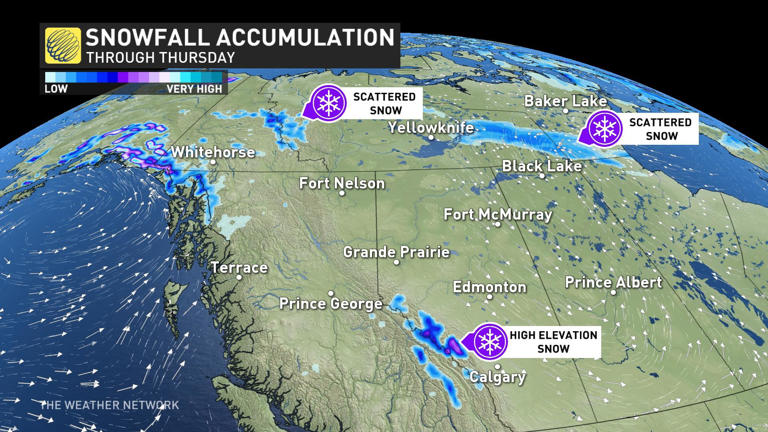
Signs of snow and frost span parts of Canada as we hit mid-June© Provided by The Weather Network
Drivers along Highway 93, from Jasper to Banff, may be impacted by cold rain and slippery conditions. We'll be closely monitoring any snow accumulations in Banff, which normally pick up mere trace amounts in the month of June. Anything over 0.2 cm could be unusual for the area.
A frosty East Coast
Meanwhile, another chilly upper-level low that's brought early spring-like conditions to the Great Lakes, presents a risk for frost across Canada's East."With clear night skies and calm winds as back up, temperatures hover near the freezing mark very early Tuesday morning for central Newfoundland, where frost advisories are in affect," says Rachel Modestino, a meteorologist at The Weather Network. "Patchy frost may be the Tuesday morning sight for some, especially in low lying areas or valleys in the Interior."
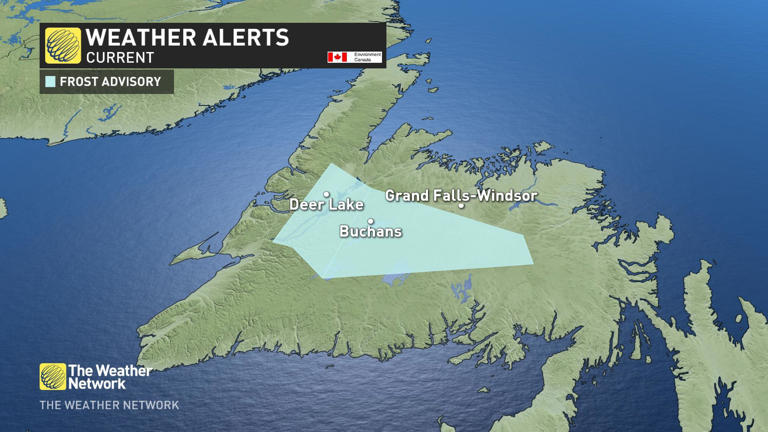
Signs of snow and frost span parts of Canada as we hit mid-June© Provided by The Weather Network
While Newfoundland is certainly no stranger to any wintry weather, this frost is a bit unusual for mid-June across the region. On average, the town of Buchans has a last frost date of May 28, so we're currently sitting two weeks beyond the average.
It appears any signs of summer may be taking a vacation from Canada for most of this week, bringing unsettled and cooler weather from coast to coast for this third week of June.
jed turtle
a brother in the Lord
Lots of volcanic activity in the last year has been putting dust high up in the atmosphere all across the globe, reflecting sunlight and dropping temps.Signs of snow and frost span parts of Canada as we hit mid-June
Story by Digital Writers • 51m ago
June 12 2023
The Weather Network
It may be mid-June, but some of us will be using the "F-word". Find out why.
Frost and snowfall -- two words that don't typically roll off the tongue easily in mid-June. It's the reality for some Canadians this week however, as any summer-like weather will take a back seat.
A developing clipper system will trigger beneficial and widespread rain from B.C. to Manitoba. The incoming instability features a cold air mass, lowering freezing levels across the Rockies by Wednesday. Elevations above 2400 metres will be cold enough to pick up snowfall accumulations, though mostly confined to the alpines.

Signs of snow and frost span parts of Canada as we hit mid-June© Provided by The Weather Network
Drivers along Highway 93, from Jasper to Banff, may be impacted by cold rain and slippery conditions. We'll be closely monitoring any snow accumulations in Banff, which normally pick up mere trace amounts in the month of June. Anything over 0.2 cm could be unusual for the area.
A frosty East Coast
Meanwhile, another chilly upper-level low that's brought early spring-like conditions to the Great Lakes, presents a risk for frost across Canada's East.
"With clear night skies and calm winds as back up, temperatures hover near the freezing mark very early Tuesday morning for central Newfoundland, where frost advisories are in affect," says Rachel Modestino, a meteorologist at The Weather Network. "Patchy frost may be the Tuesday morning sight for some, especially in low lying areas or valleys in the Interior."

Signs of snow and frost span parts of Canada as we hit mid-June© Provided by The Weather Network
While Newfoundland is certainly no stranger to any wintry weather, this frost is a bit unusual for mid-June across the region. On average, the town of Buchans has a last frost date of May 28, so we're currently sitting two weeks beyond the average.
It appears any signs of summer may be taking a vacation from Canada for most of this week, bringing unsettled and cooler weather from coast to coast for this third week of June.
sssarawolf
Has No Life - Lives on TB
Our weather this week. Back o 70 d. F on Friday the 23rd of June. It sure would be nice to get that rain they say we might get. We can have an 80 percent chance and just get a few sprinkles.
Today
Mostly sunny, with a high near 57. Breezy, with a southwest wind 18 to 23 mph.
Tonight
Partly cloudy, with a low around 37. Breezy, with a southwest wind 11 to 20 mph.
Monday
A 30 percent chance of showers, mainly after 10am. Snow level 4400 feet rising to 5500 feet in the afternoon. Partly sunny, with a high near 53. Southwest wind 7 to 10 mph becoming northwest in the afternoon. New precipitation amounts of less than a tenth of an inch possible.
Monday Night
A 30 percent chance of showers, mainly before 11pm. Snow level 5500 feet. Mostly cloudy, with a low around 37. West wind 9 to 15 mph becoming south in the evening. Winds could gust as high as 23 mph. New precipitation amounts of less than a tenth of an inch possible.
Tuesday
A slight chance of showers, then showers likely and possibly a thunderstorm after 11am. Snow level 5100 feet rising to 6100 feet in the afternoon. Partly sunny, with a high near 54. West wind 11 to 14 mph. Chance of precipitation is 60%. New rainfall amounts of less than a tenth of an inch, except higher amounts possible in thunderstorms.
Tuesday Night
A chance of showers and thunderstorms before 9pm, then a chance of showers between 9pm and 11pm. Mostly cloudy, with a low around 39. Chance of precipitation is 30%.
Wednesday
Partly sunny, with a high near 60.
Wednesday Night
Mostly clear, with a low around 42.
Thursday
Sunny, with a high near 67.
Thursday Night
Partly cloudy, with a low around 48.
Friday
A 30 percent chance of showers. Partly sunny, with a high near 70.
Friday Night
A 30 percent chance of showers. Mostly cloudy, with a low around 51.
Today
Mostly sunny, with a high near 57. Breezy, with a southwest wind 18 to 23 mph.
Tonight
Partly cloudy, with a low around 37. Breezy, with a southwest wind 11 to 20 mph.
Monday
A 30 percent chance of showers, mainly after 10am. Snow level 4400 feet rising to 5500 feet in the afternoon. Partly sunny, with a high near 53. Southwest wind 7 to 10 mph becoming northwest in the afternoon. New precipitation amounts of less than a tenth of an inch possible.
Monday Night
A 30 percent chance of showers, mainly before 11pm. Snow level 5500 feet. Mostly cloudy, with a low around 37. West wind 9 to 15 mph becoming south in the evening. Winds could gust as high as 23 mph. New precipitation amounts of less than a tenth of an inch possible.
Tuesday
A slight chance of showers, then showers likely and possibly a thunderstorm after 11am. Snow level 5100 feet rising to 6100 feet in the afternoon. Partly sunny, with a high near 54. West wind 11 to 14 mph. Chance of precipitation is 60%. New rainfall amounts of less than a tenth of an inch, except higher amounts possible in thunderstorms.
Tuesday Night
A chance of showers and thunderstorms before 9pm, then a chance of showers between 9pm and 11pm. Mostly cloudy, with a low around 39. Chance of precipitation is 30%.
Wednesday
Partly sunny, with a high near 60.
Wednesday Night
Mostly clear, with a low around 42.
Thursday
Sunny, with a high near 67.
Thursday Night
Partly cloudy, with a low around 48.
Friday
A 30 percent chance of showers. Partly sunny, with a high near 70.
Friday Night
A 30 percent chance of showers. Mostly cloudy, with a low around 51.
My daughter said it was 30 at our place in Montana this morning. Had frost on the truck windshield.Signs of snow and frost span parts of Canada as we hit mid-June
Story by Digital Writers • 51m ago
June 12 2023
The Weather Network
It may be mid-June, but some of us will be using the "F-word". Find out why.
Frost and snowfall -- two words that don't typically roll off the tongue easily in mid-June. It's the reality for some Canadians this week however, as any summer-like weather will take a back seat.
A developing clipper system will trigger beneficial and widespread rain from B.C. to Manitoba. The incoming instability features a cold air mass, lowering freezing levels across the Rockies by Wednesday. Elevations above 2400 metres will be cold enough to pick up snowfall accumulations, though mostly confined to the alpines.

Signs of snow and frost span parts of Canada as we hit mid-June© Provided by The Weather Network
Drivers along Highway 93, from Jasper to Banff, may be impacted by cold rain and slippery conditions. We'll be closely monitoring any snow accumulations in Banff, which normally pick up mere trace amounts in the month of June. Anything over 0.2 cm could be unusual for the area.
A frosty East Coast
Meanwhile, another chilly upper-level low that's brought early spring-like conditions to the Great Lakes, presents a risk for frost across Canada's East.
"With clear night skies and calm winds as back up, temperatures hover near the freezing mark very early Tuesday morning for central Newfoundland, where frost advisories are in affect," says Rachel Modestino, a meteorologist at The Weather Network. "Patchy frost may be the Tuesday morning sight for some, especially in low lying areas or valleys in the Interior."

Signs of snow and frost span parts of Canada as we hit mid-June© Provided by The Weather Network
While Newfoundland is certainly no stranger to any wintry weather, this frost is a bit unusual for mid-June across the region. On average, the town of Buchans has a last frost date of May 28, so we're currently sitting two weeks beyond the average.
It appears any signs of summer may be taking a vacation from Canada for most of this week, bringing unsettled and cooler weather from coast to coast for this third week of June.
Last year we had 6 inches of snow on June 14th. It happens 9 out of 10 years according to her rancher boss who is 84.


